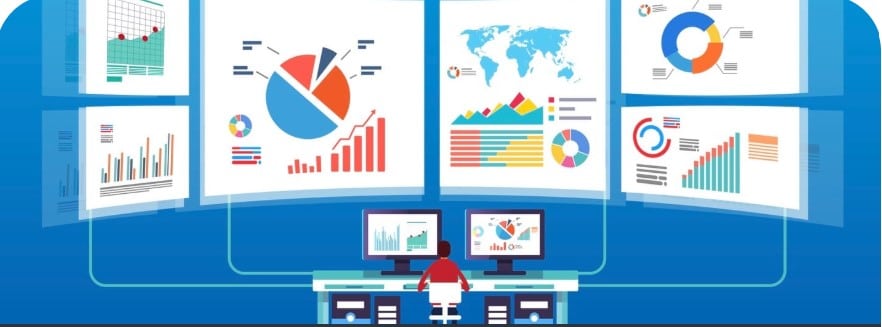Picture yourself in a large room with members of your sector, including journalists, influencers, rivals, clients, and specialists. Everyone is speaking simultaneously. Imagine being able to hear them all clearly, comprehend what they have to say, and utilize that knowledge to expand your company. You can accomplish just that with the use of media intelligence technologies.
Being informed is not only beneficial but also essential in the rapidly evolving digital world of today. The market may be changing, client needs may be evolving, and your competitors may be launching new campaigns while you’re preparing your next big move. You don’t need to speculate as to what’s happening. The information you need to make informed judgments is provided by media intelligence.
Let’s look at how to use these tools in practice, not just in theory, to keep tabs on your rivals and stay ahead of trends before they blow up.
Let’s Start with the Definition of Media Intelligence
Media intelligence isn’t just about checking who mentions your business. It means listening to what people are saying on blogs, forums, social media, and news websites, then turning that information into useful ideas you can act on.
Consider it your company’s radar. It enables you to see what is happening, what is coming, and how others are feeling about it.
Why You Can’t Afford to Ignore It
Suppose you are in charge of a developing IT business. You learn too late one day that your rival has introduced a new function that your clients have been requesting. Your revenues decline. Online discourse changes. You rush in an attempt to catch up.
Go back now. What if a media intelligence instrument had been in use? As soon as their press release was released, you would have seen it. Before the launch, you would have observed an increase in discussions around a particular subject. You could have anticipated the action and had a counterargument ready. That is how media intelligence differs. It allows you to see and hear things that you can’t always be there.
Step Into the Tools: What They Do
There’s much more to media intelligence tools than merely tracking how often your name appears online. They keep tabs on your rivals, identify trends in the sector, identify hot topics, and even pick up on the sentiments underneath the words.
Well-known programs that collect data from the internet include Meltwater, Talkwalker, Brandwatch, and Agility PR Solutions. They then present information to you in the form of actionable insights, dashboards, charts, and alerts. A data scientist is not required. These tools are designed for analysts, business owners, public relations teams, and marketers who require clarity quickly.
How These Tools Can Be Used Effectively (Without Being Overwhelmed)
Get specific first. Keep track of the important things, not everything. Only the areas of the internet that have an impact on your business are of interest to you. Enter your top three rivals to get started. Create keyword alerts for their product lines, leadership, and brand names. Pay attention to what the media is saying about them and the internet responses from consumers.
You may even go into an emotional state on some platforms. You will be able to determine whether people are excited, joyful, agitated, or confused in addition to what they are saying. That is a wise comment.
Tracking Competitors Without Spying
The goal of media intelligence is to analyze public discourse, not to pry into personal information. You’ll know whether your rival recently handled a crisis, executed a viral campaign, or was highlighted in a major magazine. You’ll discover how their audience responded, which channels performed best, and whether they were trusted.
This type of visibility makes it easier to compare your work. Are you staying up to date? Are your campaigns successful? Are they outperforming you in a way you haven’t yet noticed?
It’s not always necessary to imitate your competitors. Learning what not to do is the key.
Catching Trends Before They Go Mainstream
Tends to develop over time rather than merely showing up. You may observe such accumulation in real-time with media intelligence.
Imagine that more individuals are discussing environmentally friendly IT products. It begins with a few blog posts, gains traction on social media, and eventually leads to pieces being published by news sites. You may follow that path with a media intelligence tool, and before the market becomes congested, you can place your brand there. Instead of following trends, you start creating them.
Making It Count: From Insight to Action
All of this information is fantastic, but if you don’t use it, it’s useless. That’s where a lot of enterprises fail. They gather reports, yet they do nothing with them.
Don’t merely observe, take action.
It could be time to launch a campaign emphasizing your strengths if perceptions of your rival are becoming unfavorable. Make instructive content about any issues you see growing in your sector. Respond to inquiries from clients that your rivals are failing to address.
Final Thoughts
You can’t just set up media intelligence and forget about it. It’s a habit, not a campaign. Businesses must constantly assess their surroundings in order to develop, just like sportsmen do by watching replays to enhance their performance.
Your rivals aren’t just sitting there. You shouldn’t either.
When you have a solid media intelligence plan, you’re predicting rather than merely responding. You’re creating trends, not following them. And that’s what these tools’ true power is.




